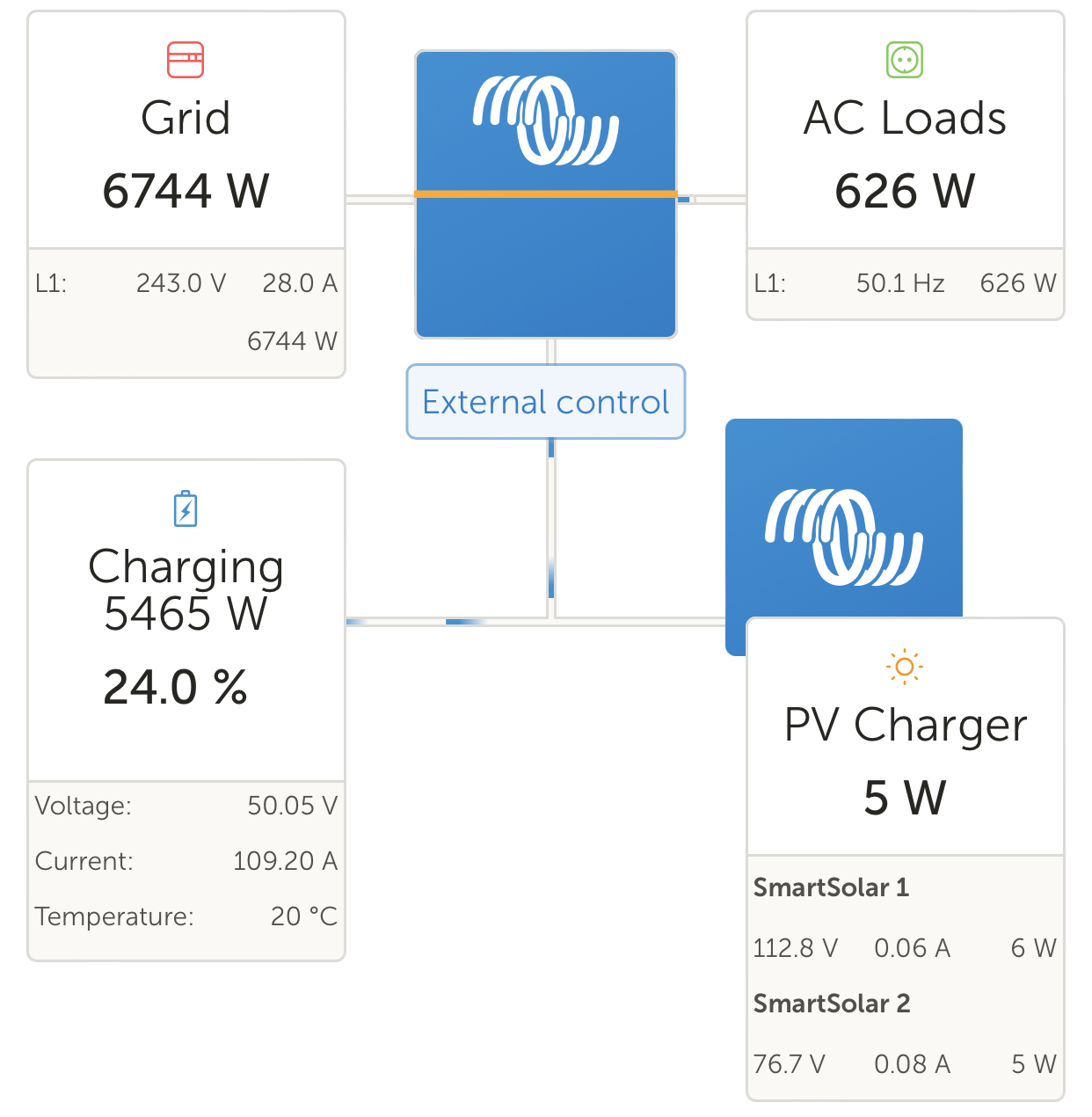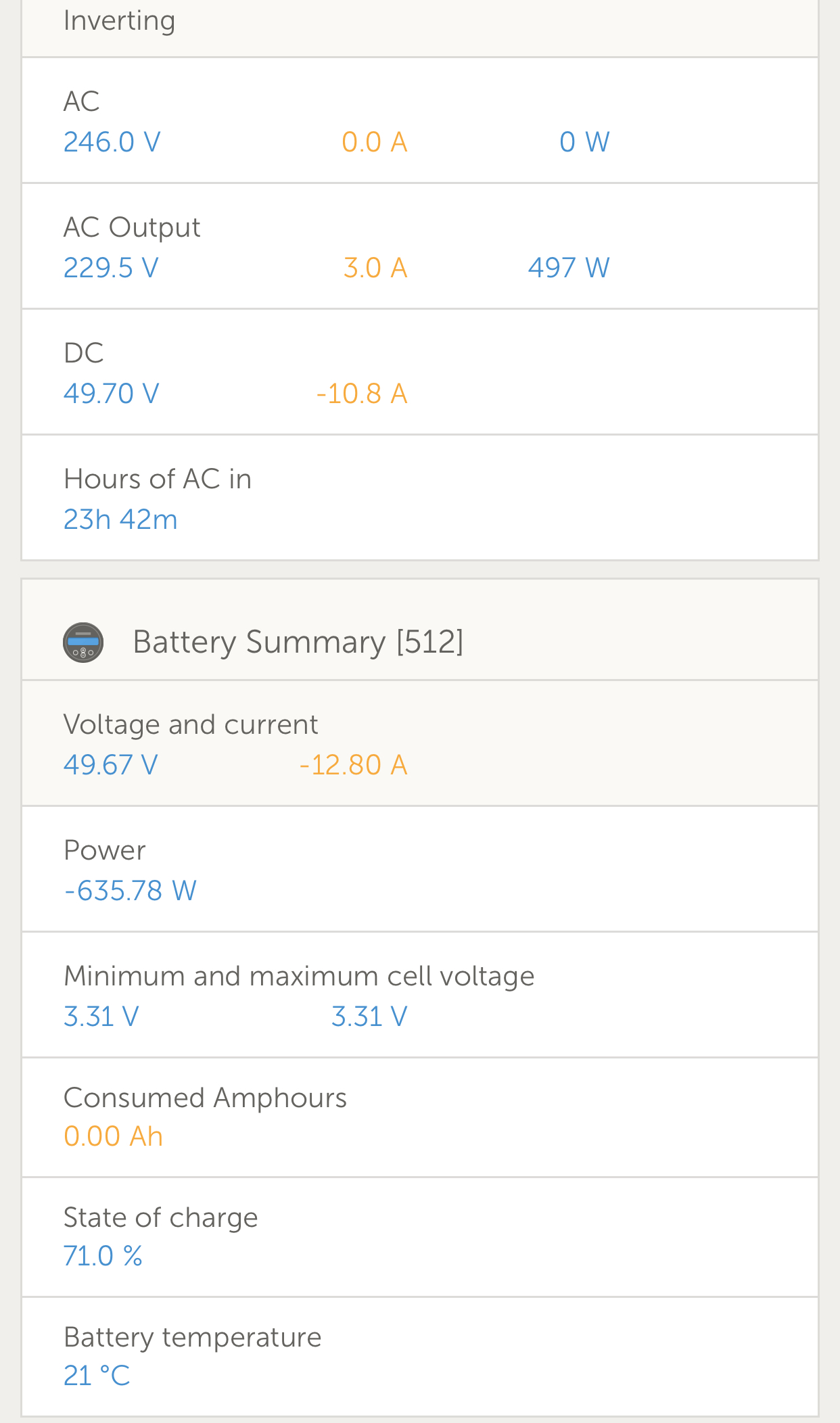Hi,
Running a Multiplus-ii with 12 x Pylontech US3000C batteries. When watching the numbers on the Cerbo GX screen or VRM I seem to have a lot more losses than I was expecting based on the expected efficiency.

For example, taking the screenshot above, there is 6744W coming from the grid, 626W of load and 5465W charging the battery. That means 653W is being lost (9.6%) which is a lot higher than I expected.
The only DC loads are the inverter, GX and two MPPT 250/85.
Is this expected or do I have an issue?
Thanks





